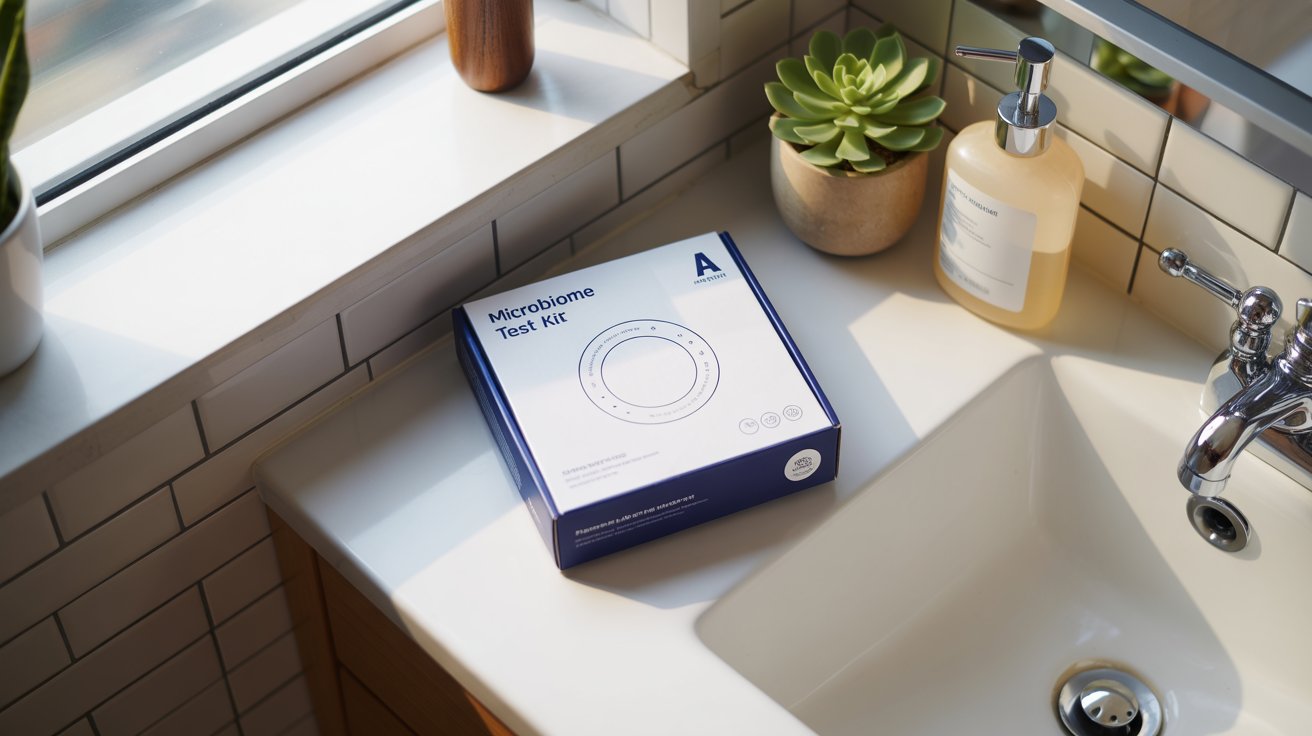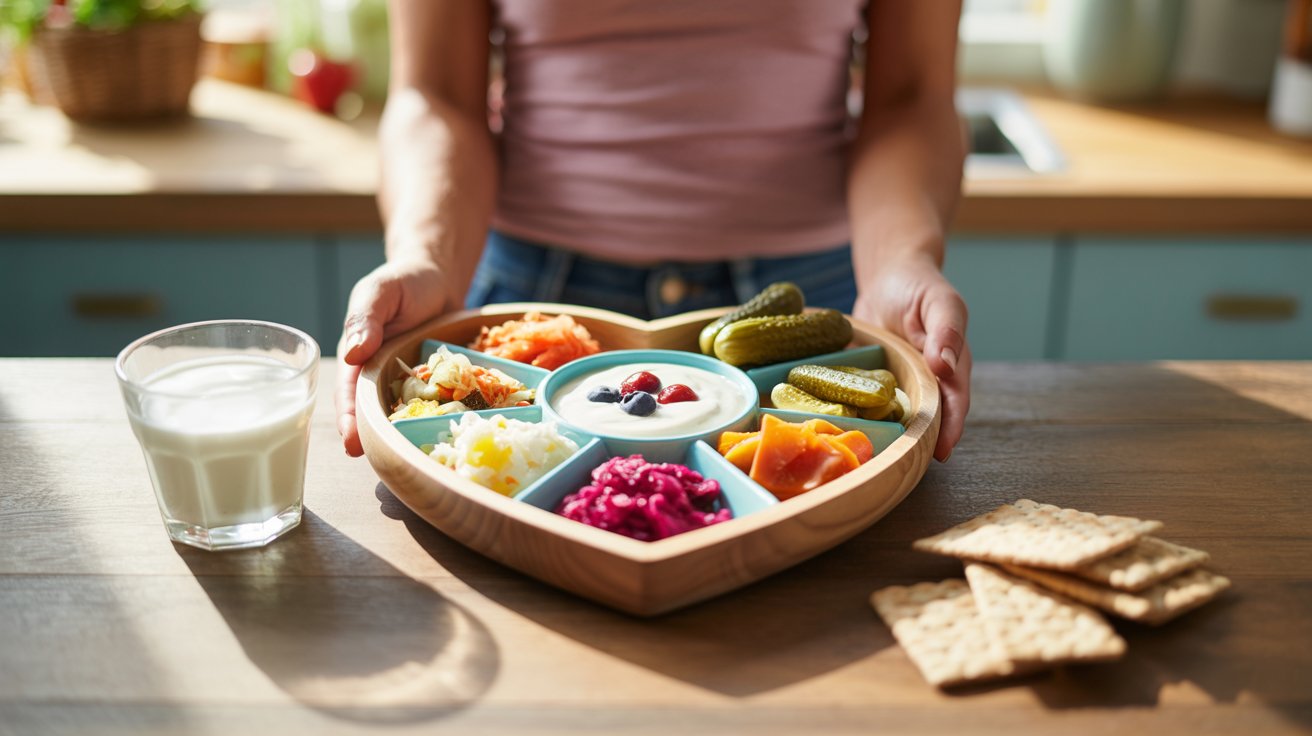Okay, imagine this: You’ve finally hopped on the probiotic train—sipping kombucha, popping capsules, maybe spooning some sauerkraut onto your sandwich. You’re feeling good about your gut. But then someone mentions synbiotics, and suddenly, you’re wondering if there’s another level to this whole microbiome thing.
Spoiler alert: There is.
Synbiotics are the gut health power couple you didn’t know you needed. They pair probiotics, those helpful live bacteria, with prebiotics, the non-digestible fibers that feed them. Think of them as a match made in digestive heaven—because when you give good bacteria the nourishment they love, your gut wins big.
If you’re tired of the guesswork and want a simple, science-backed way to support your gut health, keep reading. This blog will break down what synbiotics are, how they work, and how to start using them in your daily routine. No fluff, just real help for your belly.
So… What Are Synbiotics?

Let’s break it down. You’ve probably heard of probiotics—they’re the beneficial microbes found in yogurt, fermented foods, and supplements. Prebiotics, on the other hand, are a type of fiber that your body can’t digest, but your gut bacteria can.
Now, when you combine the two intentionally? That’s a synbiotic.
The goal is synergy. Synbiotics help ensure that those probiotic strains don’t just survive your stomach acid and move on—they stick around, thrive, and make a real difference. The prebiotics act like fuel, giving the probiotics what they need to multiply and flourish.
This combo can enhance digestion, boost immune function, and even support better mood and skin. Why? Because a happy gut means a happier everything.
Why Your Gut Absolutely Loves Synbiotics
Let’s say you’ve been dealing with bloating, sluggish digestion, or maybe just feel a little off after meals. Enter synbiotics. They help restore the balance in your gut microbiome, increasing the good bacteria while keeping the troublemakers in check.
When your gut is balanced, digestion becomes smoother, nutrient absorption improves, and inflammation often cools down. You might notice fewer sugar cravings, a more regular bathroom routine, and even fewer sick days thanks to stronger immunity.
And the best part? This all happens naturally—no complicated detoxes or gut resets required.
Types of Synbiotics: Not All Combos Are Created Equal
Here’s where things get interesting. Synbiotics come in two categories, and knowing the difference can help you choose the right one.
Complementary synbiotics are when any probiotic is paired with any prebiotic. They’re kind of like a healthy smoothie—you throw in good stuff and hope they work well together.
Synergistic synbiotics are more like a curated pairing. These use specific strains of probiotics and match them with prebiotics that feed those exact strains. This pairing is more strategic, often backed by clinical studies, and offers targeted gut benefits.
So if you’re trying to manage something like IBS, skin issues, or immune dysfunction, synergistic synbiotics might be your best bet.
Where to Find Synbiotics (Besides the Supplement Aisle)

You don’t have to rely on capsules alone. Synbiotics are showing up in functional foods too—think yogurt with added fiber, snack bars with both live cultures and chicory root, and even drinks like prebiotic sodas mixed with probiotic strains.
You can also create your own synbiotic meals right in your kitchen. Pair sauerkraut with lentils, or spoon Greek yogurt over chopped apples and oats. These combos are simple, satisfying, and powerful for your gut.
What You Might Need
If you’re thinking of adding synbiotics to your routine, a few tools can make the journey easier. Look for a high-quality supplement that lists both the probiotic strains and prebiotic fibers clearly. You might also want a journal to track how you feel over time—it’s a great way to connect changes in your digestion or energy with what you’re trying.
It also helps to keep gut-loving foods stocked in your pantry. Garlic, onions, leeks, asparagus, bananas, and oats are great prebiotic choices, while miso, kimchi, kefir, and yogurt offer natural probiotics.
Choosing a Synbiotic Supplement That’s Actually Worth It
You don’t want to waste money on a supplement that doesn’t deliver. The best synbiotics will tell you exactly which probiotic strains they use—like Lactobacillus rhamnosus GG or Bifidobacterium longum—and include recognizable prebiotics like inulin or GOS.
Dosage matters too. Look for something with at least 5 to 10 billion CFUs (that’s colony-forming units). And check if it needs refrigeration—live bacteria can lose potency if they’re not stored correctly.
Bonus tip: steer clear of vague “proprietary blends” with no specifics. Your gut deserves better.
Can You DIY Synbiotics Through Food?

Absolutely. In fact, many people prefer this approach because it’s natural, delicious, and affordable. All you need to do is pair probiotic-rich foods with fiber-filled prebiotic ingredients.
Try kimchi tossed with roasted garlic sweet potatoes. Or kefir blended with banana and chia seeds. Even something as simple as oatmeal with flax and a spoonful of plain yogurt can turn into a synbiotic powerhouse.
Food-first synbiotics offer an easy way to nourish your microbiome without popping pills.
Is It Time to Try Synbiotics?
If your gut has been sending distress signals—like bloating, irregularity, brain fog, or even skin flare-ups—it might be time to support your inner ecosystem more intentionally. Synbiotics offer a gentle, smart, and natural way to do just that.
They’re especially helpful if you’ve been on antibiotics, experienced high stress, or are trying to rebuild a healthy gut foundation. Just remember: consistency is key. Give your body time to adjust and your microbes time to thrive.
A Gut Feeling You Can Trust

Sometimes, the biggest shifts come from the smallest tweaks. Adding synbiotics to your daily life might seem like a minor change, but for your gut, it’s a game changer.
By combining the power of probiotics with the fuel of prebiotics, you’re helping your microbiome work smarter—not harder. And when your gut is thriving, you feel it everywhere: in your mood, your digestion, your energy, and beyond.
Your gut’s been rooting for you this whole time. Now, it’s your turn to return the favor.
Picture This
You’re starting your day with a cozy bowl of overnight oats, topped with Greek yogurt, banana slices, and a drizzle of honey. It’s creamy, sweet, and satisfying—but even better, it’s feeding your gut exactly what it needs. Later, you sip on a bubbly prebiotic soda with added probiotics while finishing work emails. No fuss, no fancy routine—just simple, intentional choices that support your inner health every step of the way.















